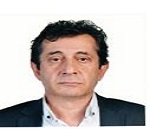Day 2 :
- Drug Designing, Pharmaceutical Organic Chemistry Drug Target Discovery
Location: Conference Hall 1

Chair
Heyam Saad
Dubai Pharmacy College for Girls, UAE
Session Introduction
Rakesh S. Shivatare
JJT University India
Title: Inventing formula for drug development and analytical techniques is the key for pharmaceutical industries

Biography:
Rakesh S. Shivatare has completed his Master in pharmacy (Pharmacognosy) at the age of 24 years from Pune University. He had worked as research officer and having 5 year experience in formulation analytical method development. He has published more than 15 papers in reputed national and international journals.
Abstract:
The pharmaceutical industry is essentially defined by innovation. Research on the forefront of science, the creation of new knowledge bases, the invention of new medicines, and the improvement of existing drugs constitute the fuel that propels the firms in this industry.
Formulation can be categorized according to the route of administration. Pharmaceutical development information provides the scientific rationale for formulation development and justification for a suitable dosage form. Excipients are the major fraction of the solid dosage forms which serve as diluents to allow the formulation of appropriately sized tablets and coatings to protect the tablet from undesirable organoleptic qualities of the drug substance. Solid state reactions in the dosage form can occur when the drug substance is reactive and may be accelerated by physical and chemical interaction with excipients.
In the field of pharmaceutical research, the analytical investigation of bulk drug materials, intermediates, drug products, drug formulations, impurities and degradation products, and biological samples containing the drugs and their metabolites is very important. From the commencement of official pharmaceutical analysis, analytical assay methods were included in the compendial monographs with the aim to characterize the quality of bulk drug materials by setting limits of their active ingredient content. In recent years, the assay methods in the monographs include titrimetry, spectrometry, chromatography, and capillary electrophoresis; also the electro analytical methods can be seen in the literature.
Gokalp Iscan
Anadolu University, Turkey
Title: Antimicrobial and antioxidant activities of secondary metabolites of endophytic fungi isolated from origanum onites
Time : 11:20-11:50

Biography:
Abstract:
Yavuz Bülent Köse
Anadolu University, Turkey
Title: Essential oil composition and antimicrobial activity of salvia cryptantha montbret & aucher ex benth

Biography:
Köse received his M.sc degree in 2001 from Osmangazi University Graduate School of Science. He received his Ph. D. from the Anadolu University Anadolu University Graduate School of Science with. Now He is Prof. Dr. of Anadolu University Faculty of Pharmacy, Pharmaceutical Botany Department. He has published about 30 academic papers in reputed journals.
Abstract:
Bülent Ergun
Anadolu University, Turkey
Title: In vitro selectivity of anethol combination with standard antifungals against candida sp.

Biography:
Abstract:
Hadyah Al-otaibi
Pharmacist, Saudi Arabia
Title: Design of taste masked enteric orodispersible tablets of diclofenac sodium by applying fluid bed coating technology
Biography:
She aspires to cultivate my skills and knowledge to contribute in drug development and formulation of new combinations, which would serve my country and the world.aspire to cultivate my skills and knowledge to contribute in drug development and formulation of new combinations, which would serve my country and the world. She done her Bachelors Degree in Pharmaceutical Sciences from King Saud University in Riyadh, KSA. And her Master's Degree in Pharmaceutical Science from King Saud University in Riyadh, KSA.
